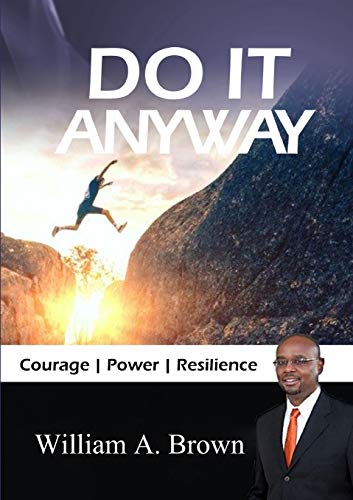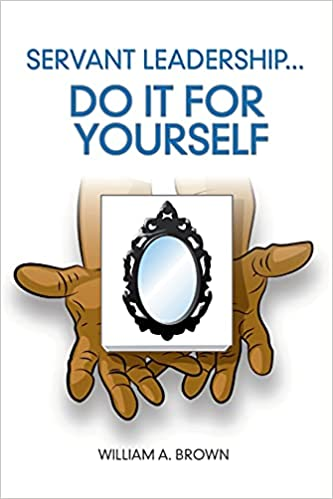Article-Detail
The Wallace Effect
Okay, I have a confession to make, one of my best friends has outed me and now I’m going to get ahead of the looming national controversy (in my mind) by saying it outright… I have never seen the movie Braveheart. Okay, he shamed me last week, I’ve watched and enjoyed it since then. The reason the movie came up was a conversation we had about leaders and why people follow them passionately vs. passively. The example he used was “The Wallace Effect”, using the fight scene Braveheart where William Wallace convinces his countrymen to fight the English army that had them outnumbered 3 to 1. The nobles (of Scotland) led the army to the faceoff, however the men lose faith and begin to turn away and head home when William Wallace rides in and explains why they should stay. The Scottish army will stand with the nobles until things get difficult (passive followship), the same men will fight and risk their lives for William Wallace (passionate followship). We agreed that when people take ownership they stay longer and fight harder. Ownership of the leader and his vision and values. But how does that happen?
Harvard Business Review (HBR) researcher Michael Maccoby studied this phenomenon for 30 years when he wrote in 2004 that followers' motivations fall into two categories: rational and irrational. “The rational ones are conscious and therefore well-known. They have to do with our hopes of gaining money, status, power, or entry into a meaningful enterprise by following a great leader—and our fears that we will miss out if we don’t. More influential, much of the time, are the irrational motivations that lie outside the realm of our awareness and, therefore, beyond our ability to control them. For the most part, these motivations arise from the powerful images and emotions in our unconscious that we project onto our relationships with leaders.” Maccoby is describing an emotional connection with the leader that causes an irrational loyalty (passionate followship) that can’t be achieved by material gain, it happens from the inside out.
Sigmund Freud was the first to provide insight into the unconscious motivations of people. After years of psychoanalysis, he realized that his patients were literally “falling in love” with him. What he discovered was that people were transferring experiences and emotions from their past to their present which he referred to as “transference”. Because of his status as their doctor (leader), the validating and empowering impact of their interactions, he was identified in their minds as a heroic parent from their past, or the heroic parent they wished they had. This lead his patients to a powerful emotional attribution toward Sigmund Freud. They fell in love with him because he provided a psychological need for safety and confidence, his patients loved him the way you’d expect them to love a good parent. This need for safety and reassurance is in everyone.
Jack Schaefer, former FBI Agent, Stanford professor, and author of ‘The Like Switch’ gives two pieces of advice 1. His “Rule #1 of friendship”, make people feel good about themselves and they will feel good about you. 2. Relationships are built on proximity (how much time is spent close to one another). Proximity frequency (how often you see each other), and proximity intensity (how meaningful the time is). You don’t need to have a highly intense interaction with someone you see everyday, but you must have intensity with people you don’t see often if you want to build loyal followship. Using my friend’s example of emotional currency, if you gave someone you saw each day $1 worth of emotional currency for each visit, you would have to give another person $7 worth if you saw them weekly, or $30 worth if you saw them monthly. Intensity can come in the form of an inspiring conversation, completion of a big project, a bonus, or any interaction that causes an emotional response. Flattery does not generate strong emotional responses.
Also, Freud describes leaders like William Wallace as “Normal Narcissists” who are independent, not vulnerable to intimidation, also noting that they have a large amount of aggressive energy and a bias for action. HBR writers note research that reveals, “most of us like to follow narcissists”. The same way that being associated with high status individuals offers ambient status, people like the status that comes with being in the orbit of normal narcissists who are often considered “winners”. Being in the orbit of narcissists makes people feel good about themselves (rule #1 of friendship), and with every interaction (proximity frequency/intensity) that feeling is reinforced. Just like Freud’s patients 100 years before Schaffer, and Wallace’s warriors 700 years before Freud. The principle is the same.
The expression, “Passion can’t be taught, either you have it or it’s caught” is true. It is highly contagious, people don’t have to be the target of a leader’s actions to be inspired, they can witness it or hear about it and they get an emotional response. Humans are such emotional beings that we get that emotional reaction even when we know the act is staged. Al Pacino’s speech to the football team in the movie Any Given Sunday, or his address in the movie Scent of a Woman jump to mind immediately. You’ll get an emotional response and connect with the character each time you see it. This principal happened with Martin Luther King during the Civil Rights Movement, Nelson Mandela’s fight for freedom in aparteid South Africa, William Wallace in the 1200’s, and it can happen with leaders today.
That was a lot of content, so I’ll sum it up here. If you want people to be willing to follow you, you need to value something that isn’t material, and isn’t about you. The Scottish army in Braveheart did not want to fight for the nobles who they knew would sell them out. It was such a common thing that whenever there was an uprising, the King would just offer bribes to the nobles and that would be enough to quell the hostility. Nobles walked away richer and the people remained poor, maligned, and frustrated. In their words, “I’m not fighting for them”. The knowledge that William Wallace did not and would not accept bribes, that he was led by the desire for freedom for all of Scotland so inspired people that he was mythologized. Some even believed him to be 7 feet tall. He was actually 6’5” which was very tall for the time in Scotland. His mission was about them. He risked everything for his people and was willing to fight shoulder to shoulder with them, instead of from a distance. His willingness to stand with them is validating, and reinforces the fact of their worth, making them feel good about themselves In the most intense moments he was right there with them, building emotional currency.
In short, if you’re after the William Wallace Effect, or inspiring people to want to follow you, it’s about having a mission that is about your people and not yourself. Consistently reinforcing their worth with your words and actions repeatedly over time. I’ve seen this happen in my career. With each assignment, I’ve gotten better and better at it and have seen better and better results. In my first assignment I didn’t pay enough attention to the needs of my team and it cost me. In successive assignments I have been far more successful because of my increased commitment to my team. If you are committed to them, their worth, their safety, and their success, you will see the Wallace Effect, and you will SOAR!
William A. Brown
January 26, 2020
https://hbr.org/2004/09/why-people-follow-the-leader-the-power-of-transference
https://aboutleaders.com/leadership-skills-2-great-leaders-ignite-passion/#gs.ub6jq7
https://www.electricscotland.com/history/articles/william_wallace.htm
https://www.youtube.com/watch?v=BUgzS-PkIJQ&t=7s




